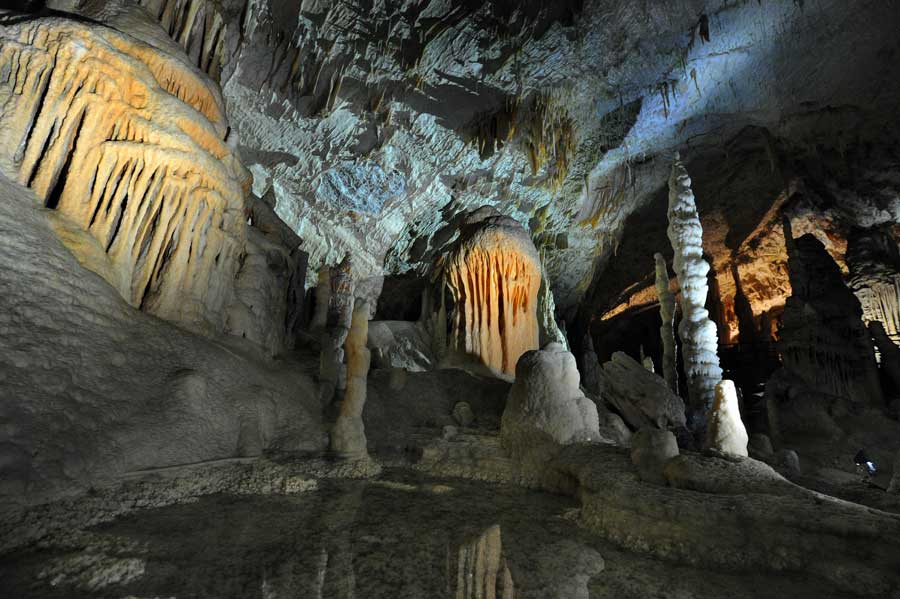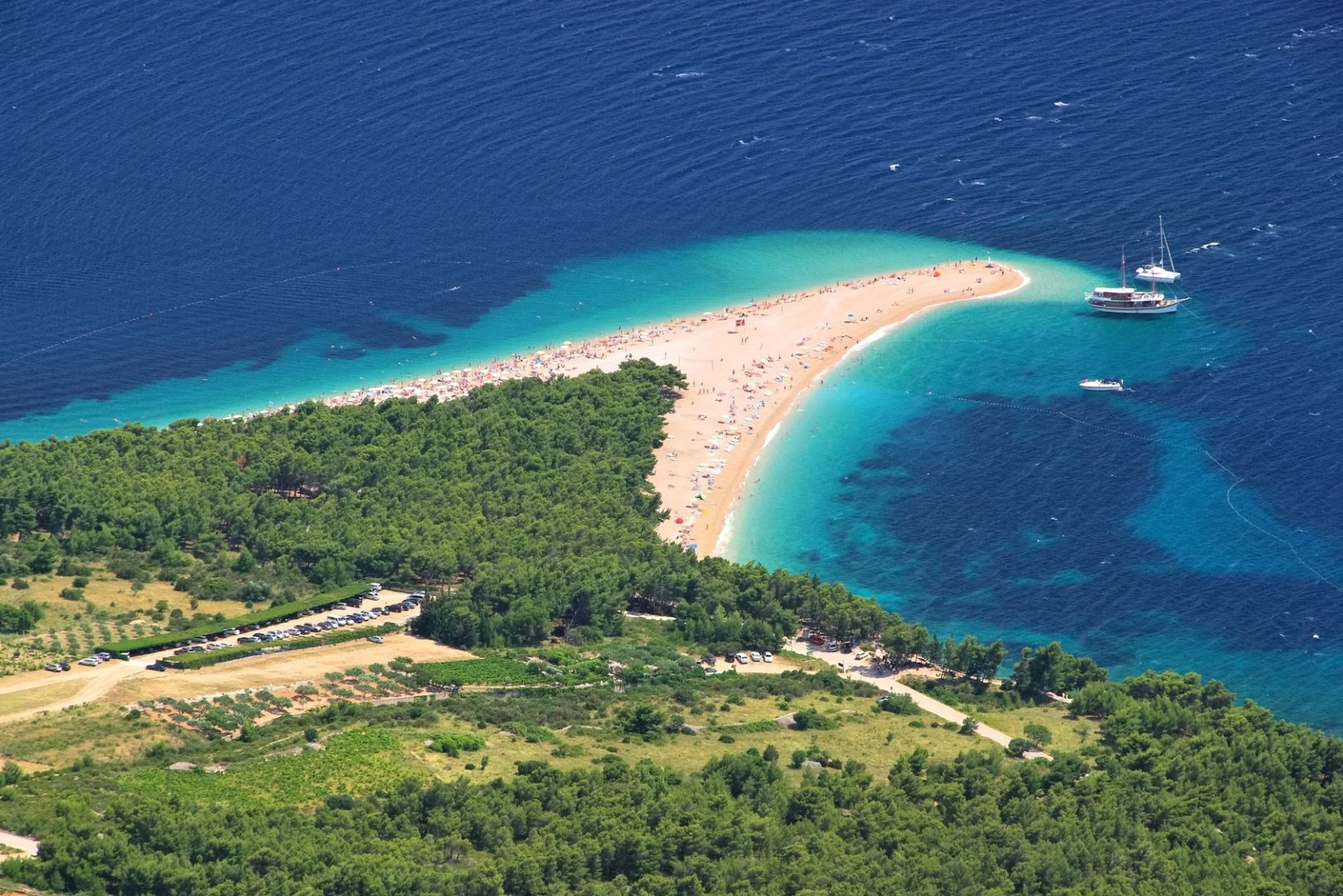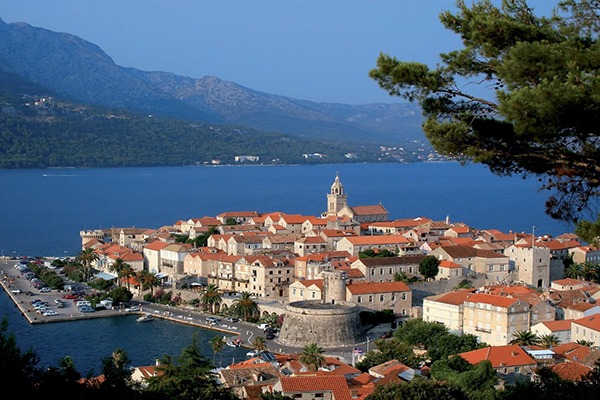Ljubljana
Both residents and numerous visitors perceive Ljubljana as a city made to the measure of man. Ljubljana is classified as a mid-sized European city, but it has preserved its small-town friendliness and relaxed atmosphere while providing all the facilities of a modern capital. It is a very unique city dotted with pleasant picturesque places.
Ljubljana Castle lies atop Castle Hill and is a well-known landmark here. This monument has served as military housing as well as the royal residence over the past centuries. The central element in touristy Ljubljana is this triple bridge. The central part is the original bridge, built-in 1842 and designed by an Italian architect. In 1929, Joze Plecnik, trying to eliminate congestion in traffic, planned, and built, ending in 1932, two side narrow bridges for pedestrians.
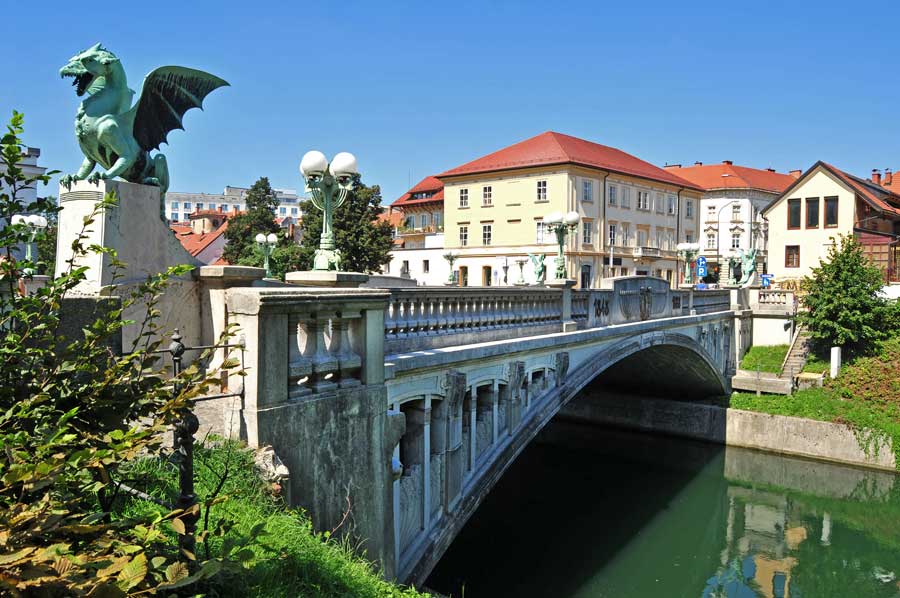
Ljubljana
Postojna
Postojna Cave is the best-known cave in the world. It is also the greatest tourist attraction in Slovenia and one of the world’s largest karst monuments. The Postojna Cave offers a unique and adventurous ride with a special train, which will take you into the cave and under spectacular underground arches, which are embellished with chandelier look-alike stalactites, through a beautiful subterranean world full of playful limestone sculptures.
Porec
Poreč is a town and municipality on the western coast of the Istrian peninsula, in Istria County, Croatia. Its major landmark is the 6th-century Euphrasian Basilica, a UNESCO World Heritage Site since 1997. Poreč is almost 2,000 years old and is set around a harbor protected from the sea by the small island of Saint Nicholas/San Nicolo (St. Nicholas). The former town of rich noblemen and Roman aristocracy, Poreč is now a popular tourist destination in Istria, known for its many sights that alternate in its streets the same way as rulers did during its turbulent history.
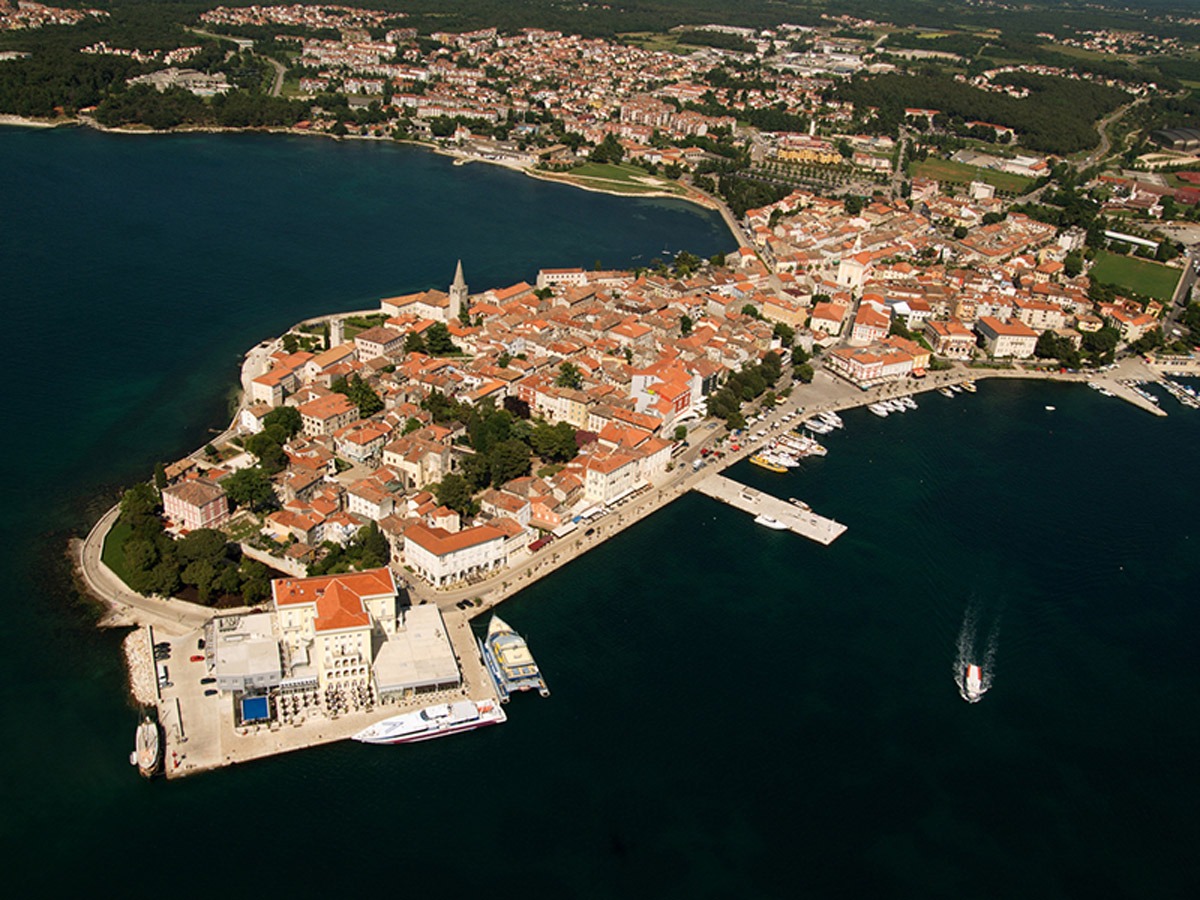
Poreč
Rovinj
Rovinj is a Croatian fishing port on the west coast of the Istrian peninsula. The old town stands on a headland, with houses tightly crowded down to the seafront. A tangle of cobbled streets leads to the hilltop church of St. Euphemia, whose towering steeple dominates the skyline. South of the old town is Lone Bay, one of the area’s pebble beaches. The Rovinj archipelago’s 14 islands lie immediately off the mainland.

Aerial shoot of Old town Rovinj at sunset, Istra region, Croatia.
Brijuni
Brijuni National Park lies off the coast of Istria and is one of Croatia’s eight national parks. The waters around the island are great for both snorkeling and sailing. So, you can witness sea life from above the ocean or from underneath the surface. Another feature of these waters is that there are also many ancient Roman ruins around and underneath the waters making the views very unique. Finally, the island itself hosts snorkeling tours so that you will not miss a single sight be it the undersea life or the artifacts that surround the island/park.
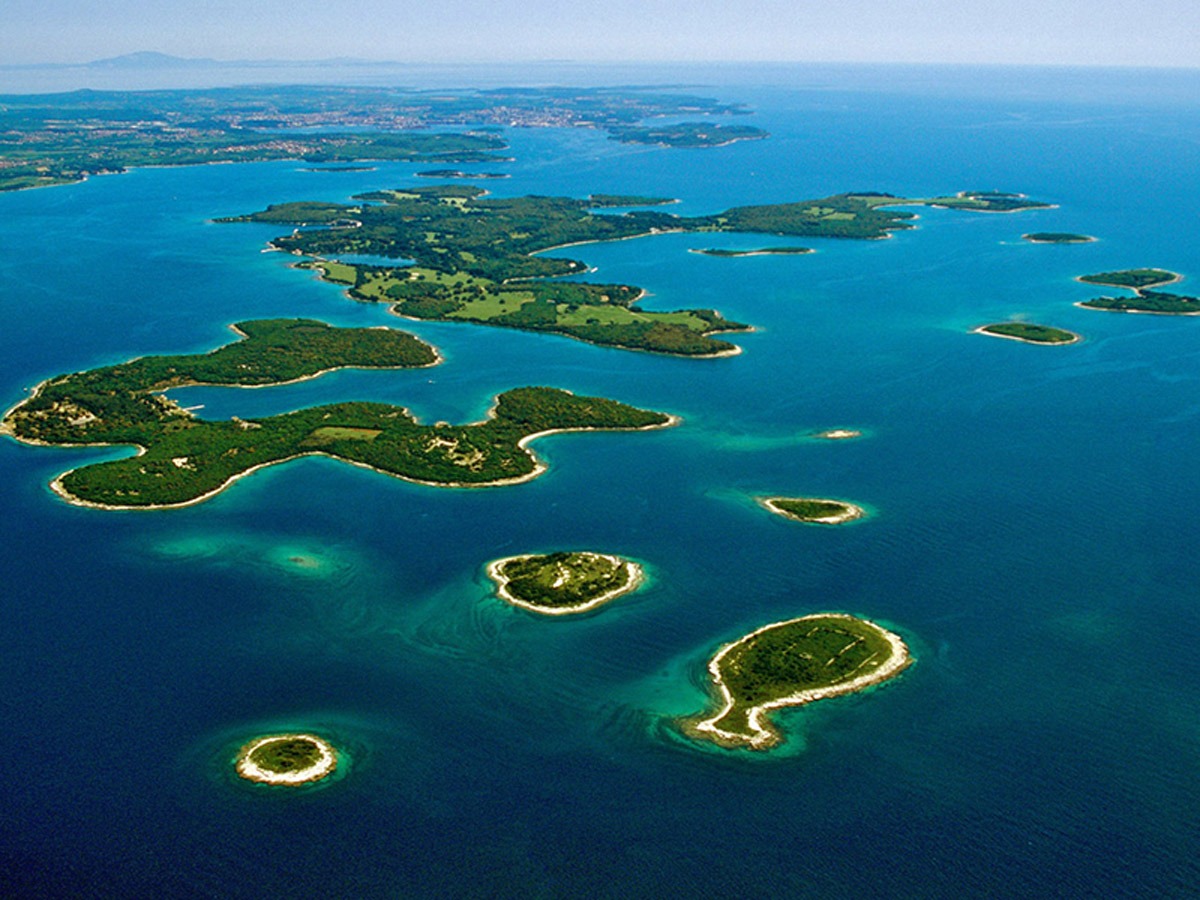
Brijuni
Pula
Pula is the largest town on the Istrian peninsula and offers a diversity of attractions to lovers of culture. The rich itinerary of its three-thousand-year-old history, where every step you take through the old town is a landmark, begins and ends with the Roman amphitheater. While strolling through Pula you will come across numerous monuments of Roman architecture: the Triumphal Arch of the Sergi from the 1st century B.C.
Mali Losinj
Mali Lošinj is the biggest settlement on the island of Lošinj, found on the southern side of the Bay of Lošinj, which, thanks to this position, has become a very important maritime and commercial center, and today is also an important tourist destination. Positioned in the August Bay, the biggest closed bay of the island with 7000 inhabitants, it is the biggest island town in the Adriatic. Mali Lošinj dates back to the 12th century when twelve Croatian families settled in the eastern bay St. Martin. First Croatian settlers were farmers, later they also turned to fishing, sailing, and shipbuilding, and with that, the settlements moved towards the coast.
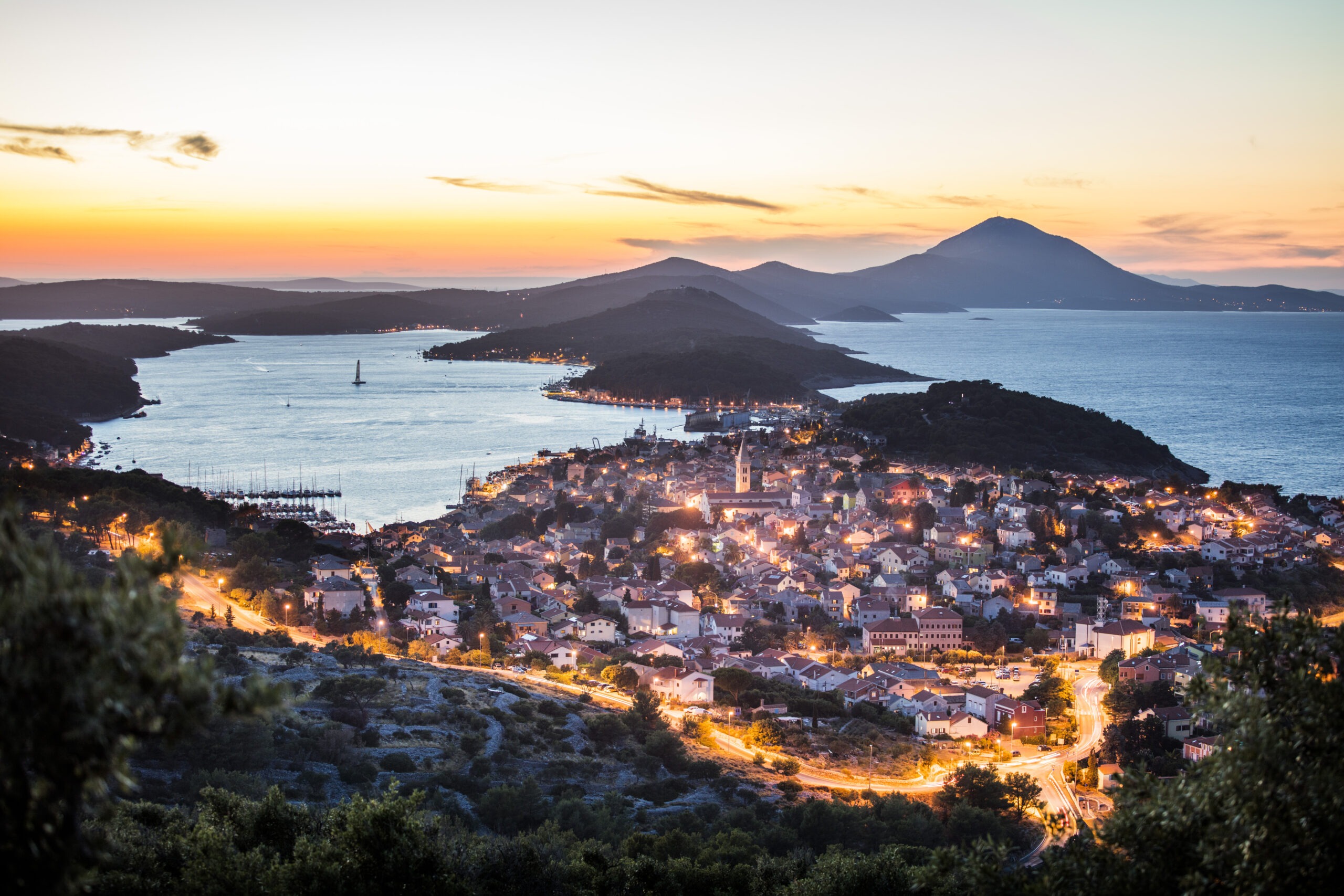
Losinj
Zadar
Zadar is a treasure trove of archaeological treasures and monuments to the ancient, medieval and Renaissance periods. This is visible by a number of sacral and architectural monuments – the church of sv. Donat [St. Donatus] where every summer the sounds of Zadar’s musical evenings echo, the Roman Forum near the main square, Kalelarga – the longest and widest street, the Cathedral of sv. Stošije [St. Anastasia], an Archaeological Museum with its exceptional treasures and many other monuments of cultural and historical heritage (town gate, Arsenal, churches, museums…).
In a city with the most beautiful sunset, in a maritime archipelago facing a multitude of islands and islets, which protect the city from the strong winds, enjoy the symphony of the Sea Organ and magical urban light installation Pozdrav suncu [Greeting the Sun] near the new harbor for cruise ships.
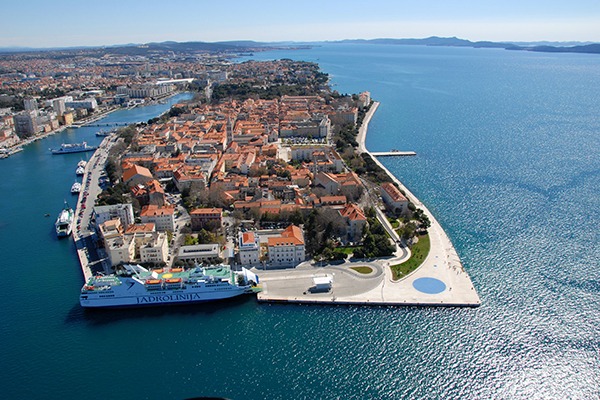
Zadar
Krka
The main attraction of Krka National Park lies in its seven waterfalls. The widest of these is Roški slap, although Skradinski buk is the biggest and most well-known.
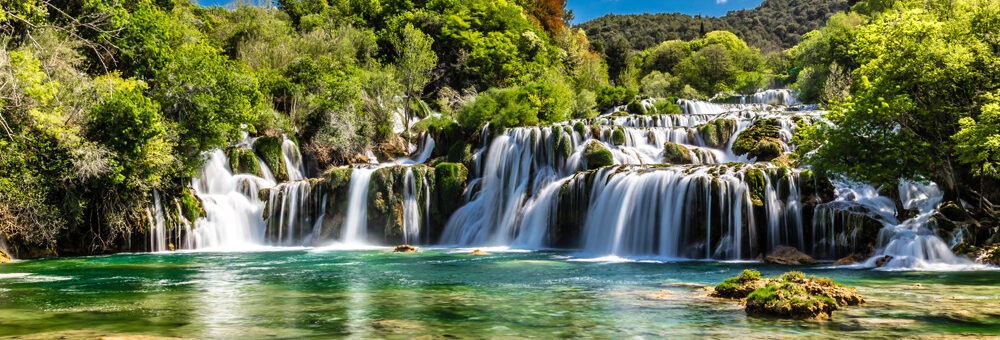
Beautiful Skradinski Buk Waterfall In Krka National Park – Dalmatia Croatia, Europe
Vodice
Neighboring Šibenik, Vodice is a small Croatian harbor town and quiet tourist getaway. The town is filled with beautiful beaches and surrounded by islands and a river. The Krka and Kornati national parks are in close proximity, so many pass through the town or stop their boats in its marinas.
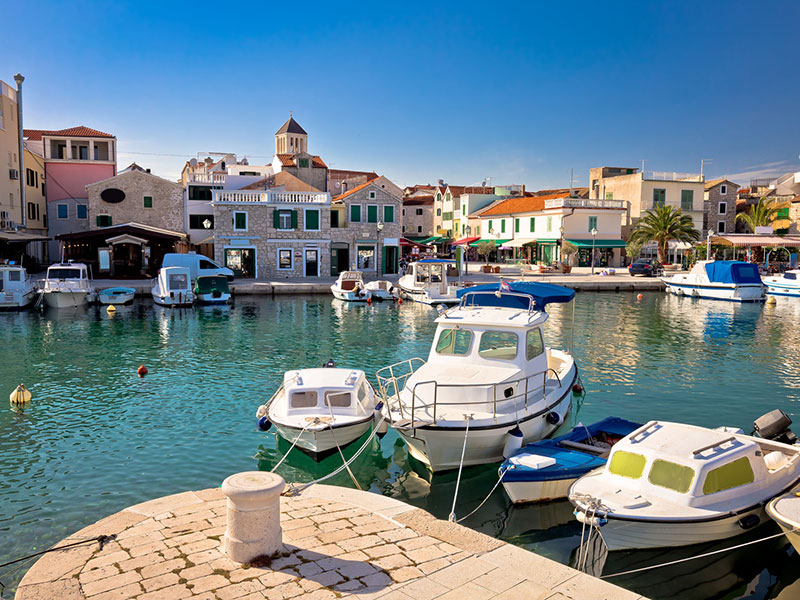
Vodice
Primosten
Primosten is a town that was once an island, and now it is primarily a holiday destination. It is situated between Split and Trogir, as well as being in close proximity to Krka National Park. Relax on their renowned pebble beaches, such as Raduca beach.
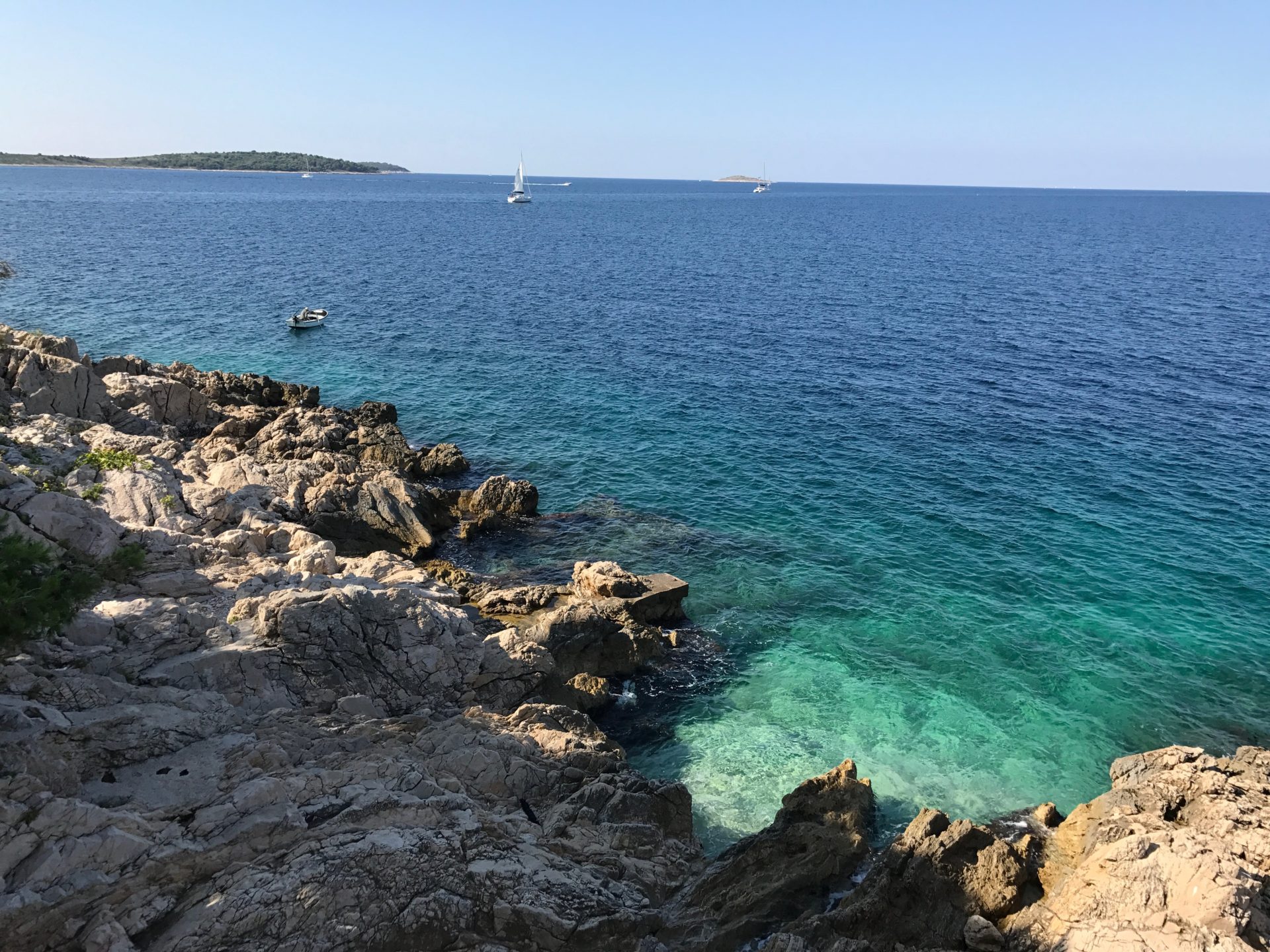
Primosten Cave
Split
Split, a town on Croatia’s Dalmatian Coast, is the second-largest city of Croatia and the largest city of the region of Dalmatia. It lies on the eastern shore of the Adriatic Sea, centered on the Roman Palace of Emperor Diocletian. With enough history to warrant it’s own extended visit, many visitors use Split as a base to explore the surrounding Dalmatian Islands.

Split
Hvar
Hvar is a city and port on the island of Hvar, part of Split-Dalmatia County, Croatia. The municipality has a population of 4,251 while the city itself is inhabited by 3,771 people, making it the largest settlement on the island of Hvar.
Korčula
The island of Korčula is best known as the birthplace of Marco Polo. Korčula is an enchanting destination surrounded by walls, and one of the best preserved medieval cities in the Mediterranean. Korčula has an abundant choice of restaurants, and there are numerous bars and clubs for those looking for evening entertainment.
Mljet
Although Mljet isn’t a very large island, it is one of the gems of the Croatian coast. Kayaking in Mljet National Park is a great way to see the coastline around these lovely Lakes. The legend says Greek hero Odysseus spent years on this island when he was captured by the nymph Calypso. That is why if you are looking for a respite from more heavily traveled areas of the country we recommend you give this paradise along the Adriatic islands a look.

Mljet
Dubrovnik
Walls are built to protect treasures, and, in Dubrovnik, this is particularly accurate, with 1,940 meters of stone surrounding one of the world’s most beautiful cities. As George Bernard Shaw stated: “If you want to see heaven on Earth, come to Dubrovnik”. “The Pearl of the Adriatic” has captivated and seduced kings and artists for centuries with its immaculate medieval architecture.



 English
English French
French

